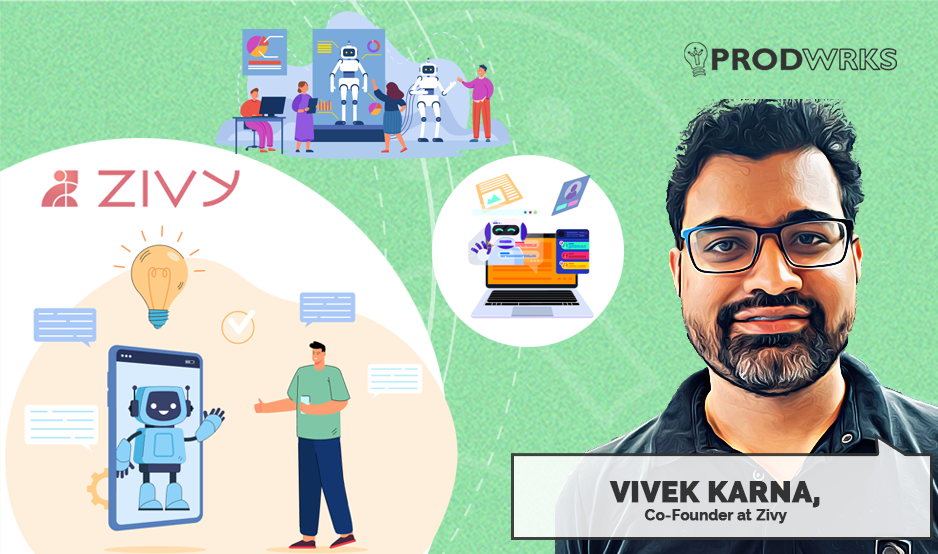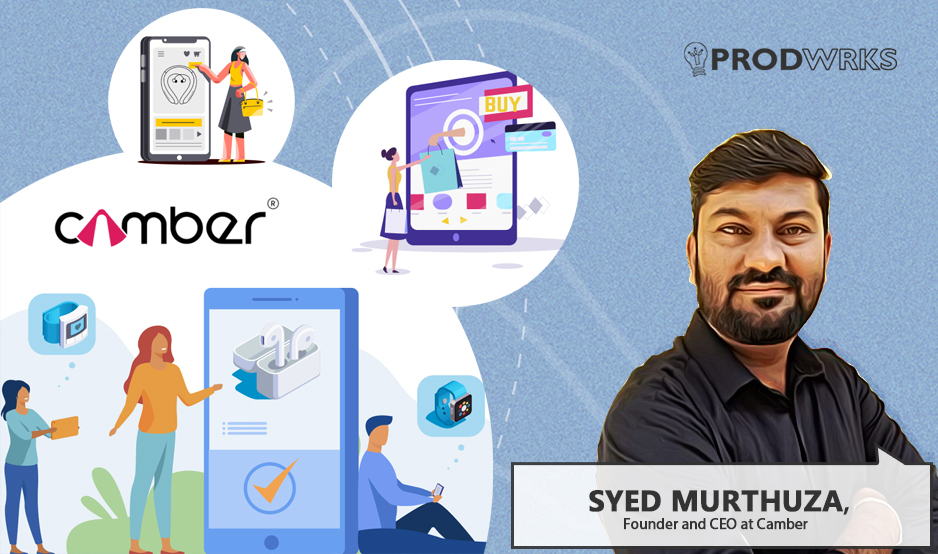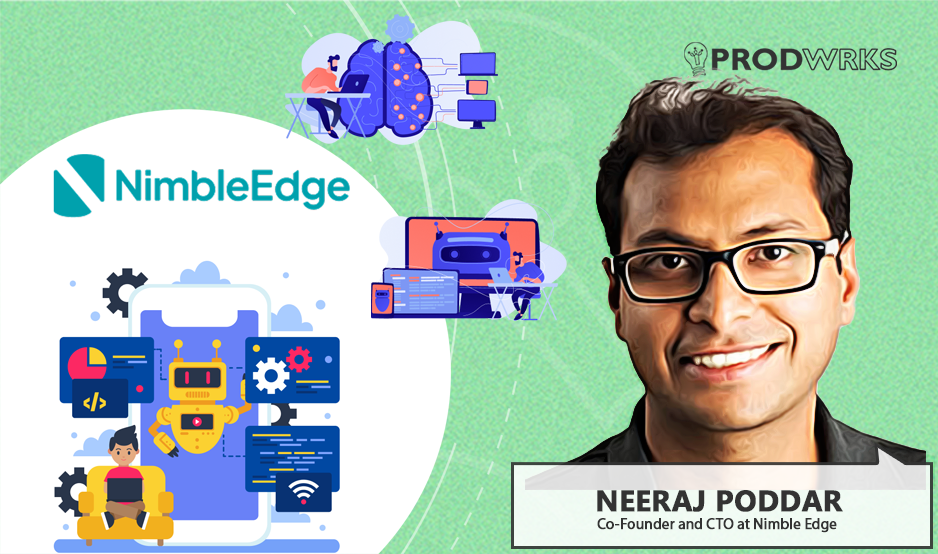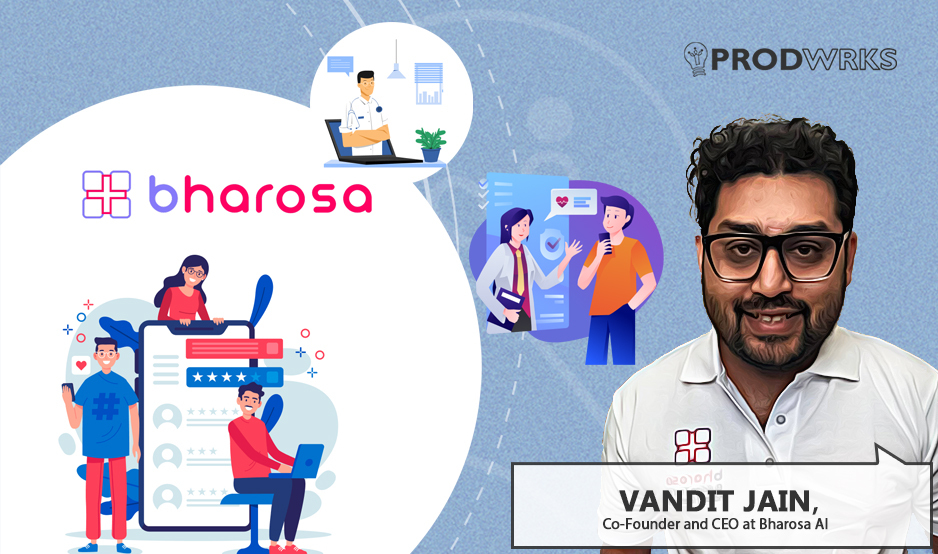
I n the post-COVID workplace, asynchronous communication has exploded. Teams collaborate across time zones using tools like Slack, WhatsApp, and Teams, often replacing in-person meetings with long threads of messages, updates, and shared files.
But while async workflows have made communication more inclusive and efficient for some, they’ve also created a new kind of problem: information overload.
Vivek says, “The clutter pulls you into reactive mode. Our goal is to help managers step back, regain presence, and lead.”
That’s the white space Zivy wants to solve. Founded in 2023 by Prashanth Venkata Yadala and Vivek Karna, Zivy, an AI-powered co-pilot that helps managers cut through the noise.
Instead of passively collecting updates, Zivy actively organizes conversations, follow-ups, and priorities all within Slack.
Used by teams at companies like Freshworks and Jupiter, Zivy is set out with the aim to make managers’ lives easier, and in a conversation with ProdWrks, Vivek explains what they’re building and why.
The Everyday Struggles That Sparked Zivy
Working at Razorpay, Vivek Karna’s career leaped into managerial roles, pulling him into cross-functional leadership responsibilities that involved managing people across multiple verticals. As the organisation he worked in started to expand, things started to get more complicated.
The reason? Managers often find it difficult to translate strategies into execution, in the midst of all the chaos of the daily operations that they need to deal with.
"You are in this unique position in middle management where you are managing people from all sides, across functions, levels, left, right, up and down, and it becomes a challenge if you’re not able to handle it."
This led to the birth of Zivy, a personalized AI Co-pilot for managers and team leads that helps them stay organized and manage their work more effectively.
Vivek explains, “We are focusing so much just on managers because the manager is orchestrating all the performance for the entire team, and we have seen that when managers become more efficient, the teams become more efficient automatically. That was the inspiration behind Zivy.
How Zivy Helps Managers Cut Through the Noise
Managers bothered by the constant bombardment of information through Slack generally tend to sort out ways to manually organize the information themselves. Different managers opt for their ways and processes to manage the flow, depending on how organised they are.
Vivek points out how all these methodologies usually end up failing as these tasks require effort and discipline day in and day out, and how humans generally find it difficult to be disciplined on tasks that get mundane.
“We found people who would keep Google Docs to store all the relevant links, such as Slack threads and other information, and type it out on a Google DOC to someone who would try a lot of productivity tools to try and be very organized using apps, calendar apps to be more organized. There is this wide spectrum of things that people will try to manage the chaos.”
Vivek explains, “ Zivy is built in a way to simplify things for you, and the only way it will work is by showing the users only those things which matter right now and keeping everything else hidden from your view. The goal is to bring more calmness into their mind so that they have the headspace to think about things from a strategic point of view and not react to things, which has become our design principle in how we have built”
Making Slack Manageable
Focused on serving product and engineering managers well as first-time managers who are from high-growth companies, Zivy provides them with an AI assistant that serves the role of managing and organizing all their communications across Slack, as these are the spaces where there are pressures on the team to deliver things faster without compromising on quality.
When a user connects Zivy to Slack, the app gets access to all the messages and notifications that the user would normally see. Zivy receives these messages in real time through Slack’s API, which then goes through its own set of rules and logic to decide which messages are important, what requires a follow-up, and what can be ignored or marked low priority.
This is done by a mix of large language models like Claude and OpenAI’s GPT that are fine-tuned using real Slack data for them to better understand the style, structure, and patterns of workplace communication. Apart from that, Zivy also helps managers automate follow-ups, and users can also prompt the system directly in plain English to fine-tune what they want highlighted.
"By looking at the status of things and knowing where they are, letting them know if there is progress or no progress, and if it needs an escalation, the goal is to free managers from the mental burden of having to remember things through memory. So it’s a combination of specific rules, generative models, and user-driven customisation."
Early Traction Through Hands-On Onboarding and Community-Driven Growth
Despite being built in India, Zivy is initially focusing on North America as the primary market for growth, owing to the cultural differences between the two countries. While the US tends to place a higher monetary value on tools that save time, even as little as half an hour a day. The prevailing “hustle culture” in India, marked by long hours and high tolerance for workload, means users may be more accustomed to inefficiencies.
Vivek notes that communicating the product’s value in India demands greater user education and behavioural change, which is why the team chose to focus on the US market, where the pitch lands more easily.
Zivy adopted a high-touch onboarding strategy similar to Superhuman. In its early stages, the team relied heavily on personal networks, going as far as second- and third-degree connections to identify and onboard users. Each manager was brought in through a one-on-one meeting, with a hands-on 30-minute onboarding call.
After several product iterations based on feedback from early alpha users, the team felt ready to open up access more broadly, where they launched the product on Product Hunt, which became a major growth channel, bringing in a significant wave of new users.
Vivek explains, “ It happened only because we spent a lot of time fine-tuning the products and a lot of iterations as well from the early set of users that we are using were using our product at the Alpha stage, so a lot of actually came through that traffic came through that.”
Zivy is also following a product-led growth (PLG) strategy, with Reddit and LinkedIn as key acquisition channels, and Vivek credits Much of their organic traffic that came from engaging with these communities, with Zivy currently adding a B2B sales motion focused on the US enterprise market.
The team is in the process of hiring its first sales hire in the US and preparing for larger-scale deployments by securing key certifications, including ISO and GDPR compliance.
Building Trust by Embedding Within Existing Workflows
Zivy’s general approach focused on speeding up the feedback cycle through prototypes rather than putting in months of effort to later iterate, where the first valid feedback was received from Figma prototypes.
A huge learning curve came with understanding that although users did not like the scattered and disorganized structure of information, they received a habit of becoming used to it, making them reluctant and skeptical to change over to a new method.
“Even if people complain about it, it becomes a habit and part of their daily routine. So when you introduce a change and say this is going to be better, there is naturally some skepticism. Habit change is hard.”
The initial launch of the platform was made as a web app, where the team convinced the users to stop using Slack to check their messages and use Zivy instead. However, the team quickly learned that asking users to leave Slack entirely and adopt a new web app caused drop-offs after the initial few days.
Users reverted to familiar patterns, even if those were inefficient, which prompted the team to build Zivy integrated along with Slack to build confidence and trust amongst the users before asking them to completely switch over to a new app
“The web app offers a better experience, but we realized being inside Slack is key. It keeps users in their flow, and once they see Zivy working, surfacing only what matters, they start trusting it. That’s when they’re more open to switching to the web app. So instead of forcing a big habit change, we guide them through the process by handholding.”
Iterating Toward a Personalized UX Engine
Vivek says, “We were working with folks here, and it was tough to find someone who really understood the kind of clarity and simplicity we wanted,”
Initially, the team assumed they could rely on prompting large language models to identify what’s important. But early versions fell short. For which the team had to shift towards a deeper iterative approach, constantly updating the system with new data points. Over time, the product started feeling “magical” because of dozens of micro-adjustments.
Today, Zivy learns from how users respond to messages, understanding what they ignore, what they reply to, and who they respond to quickly. That feedback loop powers the personalization engine, making the experience precise from day one.
“We thought it would be simple, but it wasn't. Two people in then could be in the same role, say, engineering managers but could have completely different priorities. That subtlety couldn’t be captured with generic logic, and we had to iterate a lot to get the product to work like it does today.”
Starting with Self-Serve, Expanding into Enterprise
Zivy’s go-to-market strategy is designed around individual users. The pricing follows a straightforward per-user model, similar to tools like Superhuman or personal productivity apps. It’s built for self-sign-up and immediate utility.
But as usage grew, enterprise interest began to shift the strategy. In these enterprise deals, pricing is no longer per user; it’s based on ticket size and customized to the scale and needs of the organization.
Vivek explains, “ Zivy is designed to reduce time spent on tools, not increase it. Many of its features, like follow-up, run in the background. So the focus is on daily active touchpoints, not screen time”.
The Shift in Product Building and the New Moat
Vivek explains, “But the more a user sticks with your product, the more contextual and personalized their experience becomes, and that’s not something you can copy-paste. That’s also why platforms like Slack have started blocking AI tools, even going after larger players like Glean. Because what’s valuable is no longer just the output, but the usage data that powers it.”
Vivek says, “Even on the marketing side, a single person has been able to run outreach at scale by using in-house systems that listen for relevant signals like who’s talking about use cases similar to Zivy and then triggering reachouts automatically. A campaign that might’ve needed two or three hires earlier now runs fully automated."



